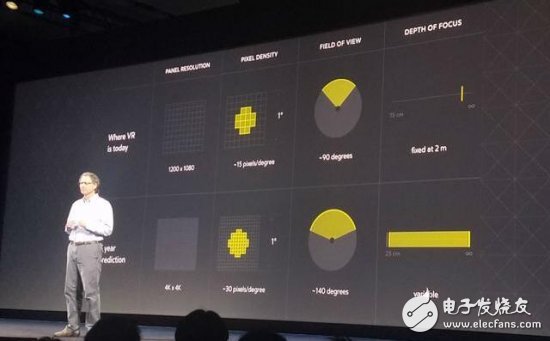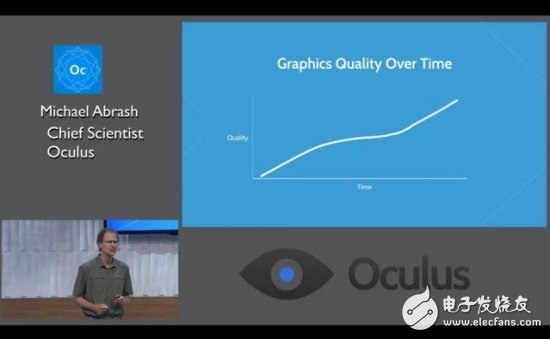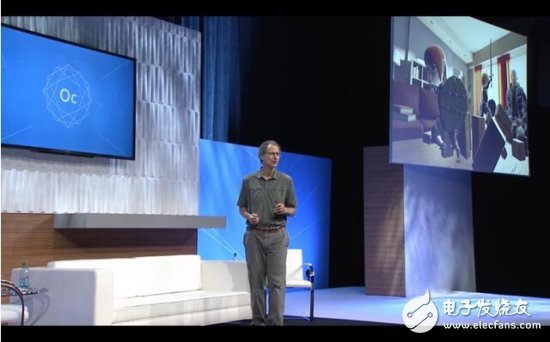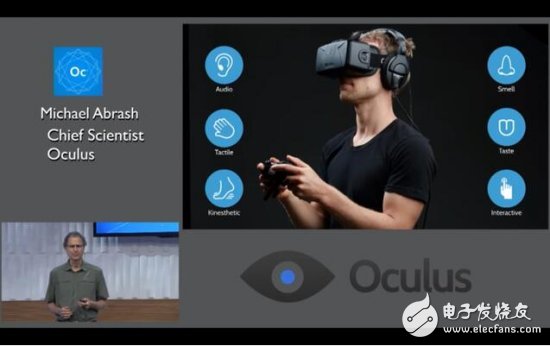Tactile and auditory can effectively enhance the sense of reality, and the technology that can replace the sense of smell and taste is not yet available. Once humans have mastered the sense of smell and taste, the virtual world will be no different from reality.
At Oculus' Connect Developers Conference, Oculus CTO John Carmack bombed the participants' brains with a wealth of new information every year. And the company's chief scientist Michael Abrash's speech is not to be missed. Because he always speaks a word. This year, he boldly predicted what a VR helmet would look like in five years. Prior to this, Abrasch first mentioned in his speech that most of his predictions made at the 2014 Connect Developer Conference in 2014 were fulfilled.

What predictions did he have? What has been achieved? How will VR develop in the future? Today, Xiaobian will analyze the four predictions of the Oculus R&D department and its impact on future markets:

Prediction 1: VR will greatly enhance graphics technology
Prophecy: Graphics technology is in urgent need of upgrade, because VR devices consume far more graphics resources than monitors, adding parallax, precise positioning, wider viewing angles and stereo vision. And graphics technology is the key to restricting the effect of VR display.
In-depth interpretation: People expect VR images to realistically imitate the real world, so graphics cards must allow traditional games to present richer content and to withstand the computational pressure of stereoscopic top-level games. This requires GPU manufacturers to provide hardware for consumers to ensure visual fidelity, stable frame rate and graphics rendering.

Is it fulfilled? The answer is yes. A few months after the Oculus Rift and HTC Vive, Nvidia and AMD unveiled more powerful GPUs, such as the GeForce 1080 and the more affordable Radeon RX 480. Although still heavy (microblogging), but finally improved.
Prediction 2: Eye tracking technology has a major impact on the future of VR
Prophecy: Eye tracking is almost certainly part of the future VR. Compared to the unreachable 2K HD picture, we will focus on a small high-resolution area on the retina - the fovea, projecting the highest resolution that the human eye can recognize, weakening the picture of other areas, and saving hardware resources. To do this, we must accurately project each frame onto the fovea, which means that the new optical display device, GPU and graphics rendering technology must integrate eye tracking technology to achieve a truly outstanding VR visual experience.
In-depth interpretation: Graphic drawing for the fove is the focus of this year's Connect Developer Conference. Interestingly, Abras proposed this concept as early as 2014.

Is it fulfilled? He is right, but the technology is not yet mature. At present, companies have just stepped into the concave-concave graphic drawing technology. The VR device that uses eye tracking technology is only FOVE. This year, Abrasch once again predicted that we need more advanced solutions to make a major breakthrough in improving the quality of VR images.
Prediction 3: Social will be the core of the VR experience
Prophecy: After entering the virtual space, we hope to have fun with friends. The social interaction in the virtual space requires sensors to capture the user's head movements, eye movements, facial expressions, gestures, and hand movements, and then project to the avatar in real time.
In-depth interpretation: Face-to-face communication with other players, feeling that they are around is very important for the future of VR. Like real-life gatherings, we want to share real-life magical moments in real time.

Is it fulfilled? Abrasch's vision became a reality at this year's Connect Developer Conference. Facebook's live demonstration of the VR social system, using Rift and Touch to achieve virtual interaction between cartoon dolls. It is still not possible to conduct live interaction in VR now, but it has been convincing enough to replace it with a cartoon doll.
Prediction 4: VR will include all sensory experiences
Prophecy: The perception system of VR will continue to escalate and eventually apply to hearing, touch, balance, movement perception, and even smell and taste. In addition to the eyes, VR will mobilize the sensory organs of the body. Future VR images are not only composed of pixels, but also include elements that provide comprehensive perception.
In-depth interpretation: head-mounted equipment is just the beginning of VR. In order to replace reality, VR must conquer all sensory organs. After entering the virtual space, we will be able to touch the table and the sofa, smell the sea breeze, and feel the sand passing through the toes. In the near future, we can also sit down with friends on the other side of the globe to watch movies and enjoy virtual food.

Is it fulfilled? This dream will eventually come true. Tactile and auditory can effectively enhance the sense of reality, and the technology that can replace the sense of smell and taste is not yet available. Once humans have mastered the sense of smell and taste, the virtual world will be no different from reality.
Electrical Butt Connectors,Wire Terminal Connectors,Electrical Terminal Connectors,Spring Terminal Connector
Wonke Electric CO.,Ltd. , https://www.wkdq-electric.com
